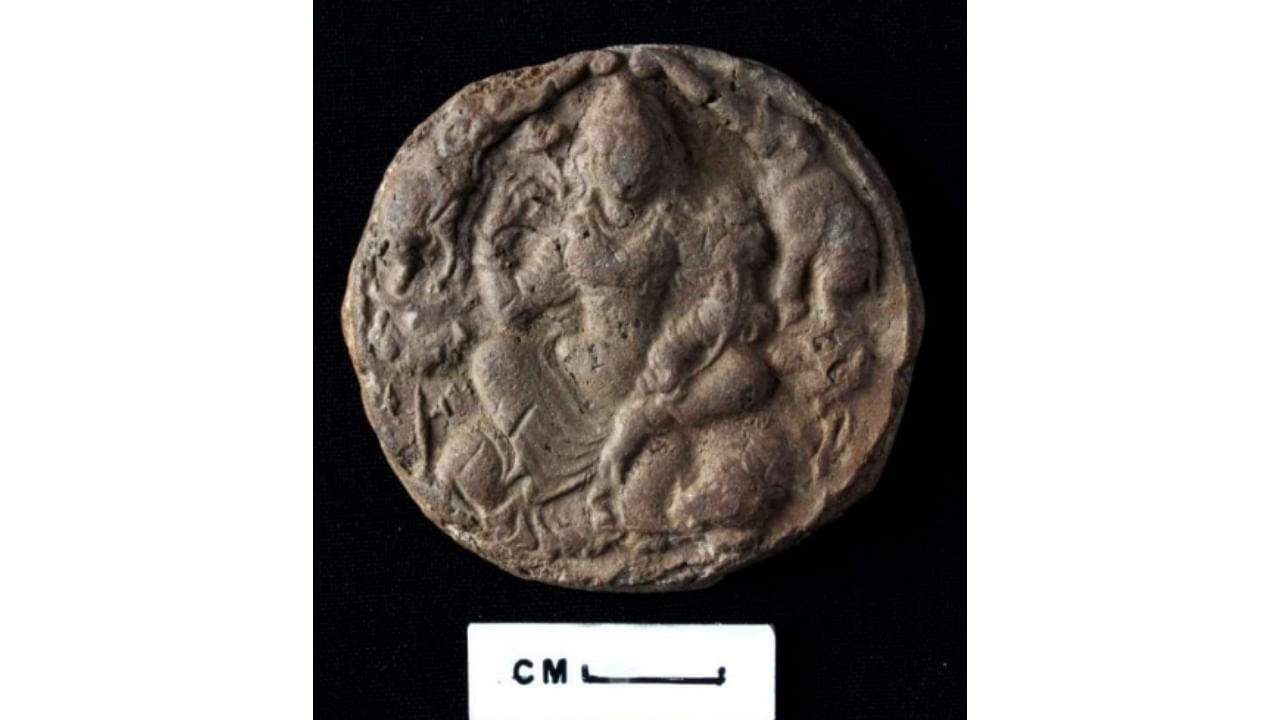
A kiln from the Kushan period, a 4th century terracotta plaque on an amulet of Gaja Laxmi, and dozens of coins have been unearthed at the Purana Qila excavation. Union minister G Kishen Reddy visited the site on Tuesday, even as officials of the culture ministry said that the findings show evidence of continuous civilisation in Delhi dating to 2500 years, predating the Mughals and the Sultanate.
The ongoing excavation was mounted in January this year, and the Archaeological Survey of India, in a release, said that the aim was to establish a complete chronology of the site. Excavations have been done till a depth of 5.50 metres, and notable findings include a stone image of Vaikuntha Vishnu from the Rajput period, a terracotta plaque of Gaja Laxmi dating to the Gupta period, a stone image of Ganesha from the Mughal era.
Apart from that, seals and sealings have been found which indicate the movement of goods along a trade route, beds in various raw materials which have been found in both finished and unfinished forms, iron slides, a bone needle, coins, terracotta figurines of humans and animals.
ASI’s Vasant Kumar Swarnkar who has been carrying out the excavation said that currently, structures from the early Kushana level have been exposed. He had earlier carried out excavations in 2013-14 as well as 2017-18. “When we speak of Delhi, we are talking of the medieval period, spanning the Sultanate and Mughal eras, as well as the Colonial period. However, the ancient city of Indraprastha has continuously had human civilisation in the last 2500 years, spanning nine cultural levels over different historical periods,” Swarnkar said.
These include the Pre-Mauryan, Mauryan, Sunga, Kushana, Gupta, Post-Gupta, Rajput, Sultanate, and Mughal periods, he added. Purana Qila was first excavated by Prof. BB Lal in 1955 and then in 1969-70.
“Our findings show that the habitation area had the Yamuna on one side and a highway on the other. The highway, which was a trade route dating to the Mauryan period, is now across what we know as the Mathura Road leading up to the National Zoological Park. Ashoka period rock edicts found in East of Kailash earlier show that the trade route existed,” Swarnkar added.